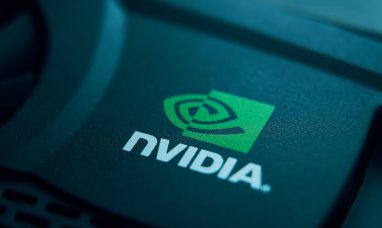Eli Lilly (NYSE:LLY) recently reported third-quarter earnings that missed Wall Street’s expectations, leading to a notable stock drop and a trimmed forecast for the remainder of 2024. This adjustment marks a shift for the pharmaceutical giant, whose key diabetes and weight-loss drugs, Mounjaro and Zepbound, reported lower-than-anticipated sales. This article explores the financial impact of Eli Lilly’s Q3 earnings miss, the company’s revised forecast, and analyst responses to these developments.
Key Earnings Miss and Forecast Revision
The pharmaceutical company announced on Wednesday a downward revision of its earnings guidance, reducing its forecasted 2024 earnings per share (EPS) target after a previous increase earlier in the year. Eli Lilly’s third-quarter revenue climbed by 20% to $11.44 billion, driven by demand for its innovative treatments in diabetes and weight management. However, this fell short of Wall Street’s expected $12.09 billion revenue target. Adjusted earnings per share also disappointed at $1.18, missing the projected $1.45 by a significant margin.
Analysts had initially expected strong results based on previous forecasts, which positioned the company to exceed consensus projections. However, the underperformance led to a substantial 6% drop in Eli Lilly’s stock value, illustrating the market’s reaction to the revised outlook and lagging sales.
Mounjaro and Zepbound Sales Decline Amid Inventory Adjustments
Sales of Mounjaro, Eli Lilly’s popular diabetes medication, and Zepbound, its weight-loss counterpart, contributed to a lower-than-expected earnings result. Mounjaro generated $3.1 billion, while Zepbound added $1.3 billion. Despite previous quarters of strong demand, U.S. pharmaceutical wholesalers reduced inventory levels, which Eli Lilly attributes to the recent dip in sales.
According to TD Cowen analyst Steve Scala, the reduced sales in both drugs raise questions about whether the drop reflects a temporary inventory correction or a possible shift in demand. Leerink Partners analyst David Risinger noted that, despite the earnings miss, he maintains an “outperform” rating on Eli Lilly’s stock, citing the company’s extensive plans for global expansion in the obesity market.
CEO’s Perspective and Operational Expenses
Eli Lilly’s CEO David Ricks assured analysts that demand for both Mounjaro and Zepbound remains high, noting that availability of all dosage levels continues to meet customer needs. The company acknowledged that compounded versions of tirzepatide, the active ingredient in Mounjaro and Zepbound, had limited financial impact but raised safety concerns, which could affect future supply.
In addition to sales challenges, Eli Lilly reported an increase in research, development, and marketing expenses, exceeding last year’s third-quarter operational costs. As the company expands its global footprint for obesity and diabetes treatments, it continues to invest in R&D and strategic marketing, which further contributed to the quarterly earnings miss.
Impact on Trulicity Sales and Broader Company Outlook
Another notable decline was in Trulicity sales, which fell by 22% year-over-year, reaching $1.3 billion. The diabetes drug, once a major revenue driver, faces increasing competition from newer treatment options, which may further influence Eli Lilly’s earnings outlook.
Looking ahead, Eli Lilly now forecasts adjusted earnings for 2024 to range between $13.02 and $13.52 per share, a notable decrease from its prior August estimate, which exceeded $16 per share. While this range falls below early projections, it remains over twice the company’s adjusted EPS for 2023, signaling anticipated growth but with moderated expectations.
Stock Market Reaction and Analyst Insights
Despite these downward adjustments, Eli Lilly’s stock had an impressive performance earlier in 2024, reaching an all-time high of $972.53 in late August. However, since this peak, the stock has retreated but remains up approximately 55% year-to-date. Following the Q3 earnings miss, shares dipped to $846.56, underscoring the market’s cautious outlook on the company’s revised growth prospects.
Analysts maintain varying perspectives on Eli Lilly’s future. While some caution that the Q3 miss and reduced forecast may indicate a potential slowing in growth, others highlight the company’s continued expansion in the global obesity and diabetes treatment markets as a positive long-term factor.
Conclusion
Eli Lilly’s third-quarter results underscore a shift in expectations as the company grapples with reduced guidance and market reactions to lower-than-expected drug sales. With demand for innovative treatments like Mounjaro and Zepbound still strong, Eli Lilly’s future hinges on its ability to sustain growth in a competitive landscape. As the company navigates operational challenges and investment costs, its Q3 results serve as a reminder of the complexities faced by pharmaceutical giants in meeting ambitious targets.
Featured Image: Freepik









